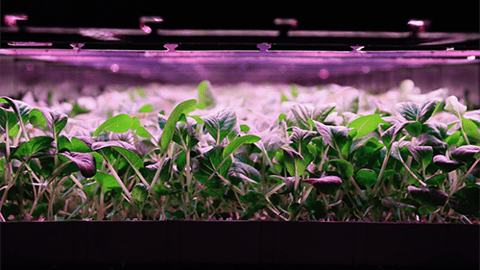Food Rescue Can Help Retailers Build Better Businesses
With one in seven Americans facing hunger and food insecurity in the United States, it’s hard to believe that 30% of all food produced is tossed in the trash. ReFED Executive Director Dana Gunders says that “food waste is the dumbest problem that is completely solvable.” On a mission to end food waste, ReFED (www.refed.org) is a national nonprofit using a data-driven approach to solve a systemwide problem across the entire food supply chain. Food rescue is one of many solutions that food retailers can employ to reduce food waste, improve profitability and help reduce hunger in the local community.
Why Food Waste Is a Problem
While the juxtaposition of hunger and food waste is hard to swallow, the impact of 92 billion pounds of food going to waste each year isn’t just a dumb problem – it’s also having a devastating impact on the environment and is a major contributor to climate change. Precious natural resources are wasted when food is grown, harvested, transported, processed and prepared, only to end up in a landfill. The carbon emissions impact on the environment from food waste is the equivalent of 50 million cars driven for an entire year!
Further, a recent study published in Nutrition Journal indicated that the average American consumer spends roughly $1,300 a year on food that’s wasted. With rising food costs, that’s another opportunity for in-store dietitians to help customers learn about the impact of food waste and money-saving strategies to maximize health.
[RELATED: Save A Lot Details Recent Social Impact]
Teaching customers the difference between use-by and sell-by dates, highlighting zero-waste cooking strategies, and offering tools and tips on proper food storage techniques can have a significant impact toward reducing food waste by half by 2030.
What Is Food Rescue?
Food rescue, also known as food recovery, is the process of collecting safe, edible food that would otherwise go to waste and redistributing it to nourish individuals in need – often within the same community. This practice offers a powerful strategy for reducing food waste, one that retailers can readily embrace.
By donating overstocked or perishable items, businesses not only prevent unnecessary waste, but also make a meaningful impact – a true win-win for both the donor and the community. Retailers benefit from no-cost food pickups rather than costly waste removal, food rescue organizations redirect a steady supply of food to the food disribution organizations that they serve, and families in need gain access to fresh, nutritious foodstuffs.
Better Business With Food Rescue US
Sandy Steigbigel, VP of national operations, and Jenna von Elling, marketing communications manager at Food Rescue US, have important insights on the value of food rescue programs for retailers. Among the greatest priorities of such initiatives is helping retailers meet sustainability goals with valuable ESG report metrics. Collaborating with a partner like Food Rescue US and its web-based app (www.foodrescue.us) simplifies the process of food donation through convenient and flexible pickup times by dedicated volunteers. By tracking food inventory for donations, food rescue programs can help retailers identify surplus items through cycling donation trends.
Food retailers play a critical role in solving food waste through food recovery, prevention and recycling. According to Food Rescue US, it’s gratifying to work with retailers – employees who get involved with the food rescue process are highly dedicated and engaged, proud of the role they play in supporting the community and among the best advocates of reducing food waste.






